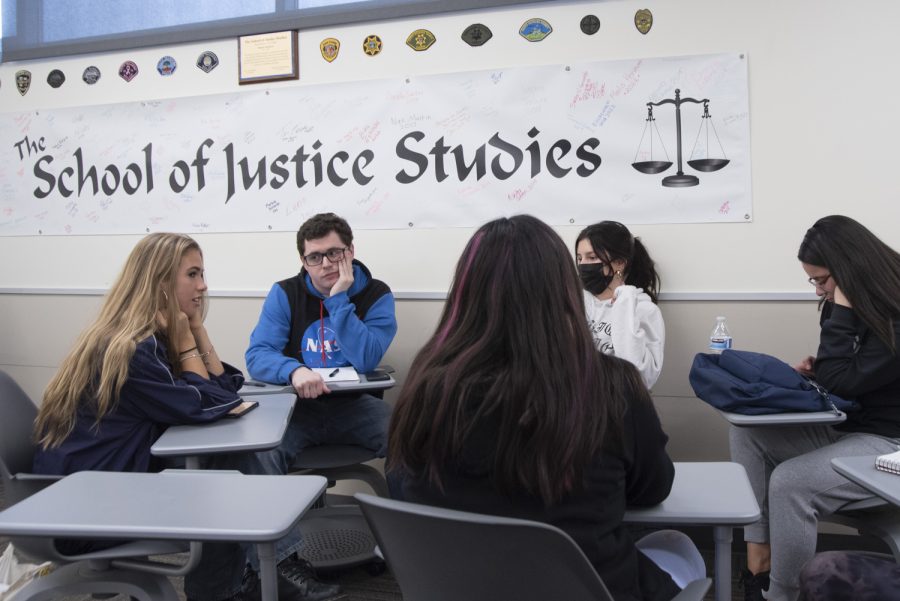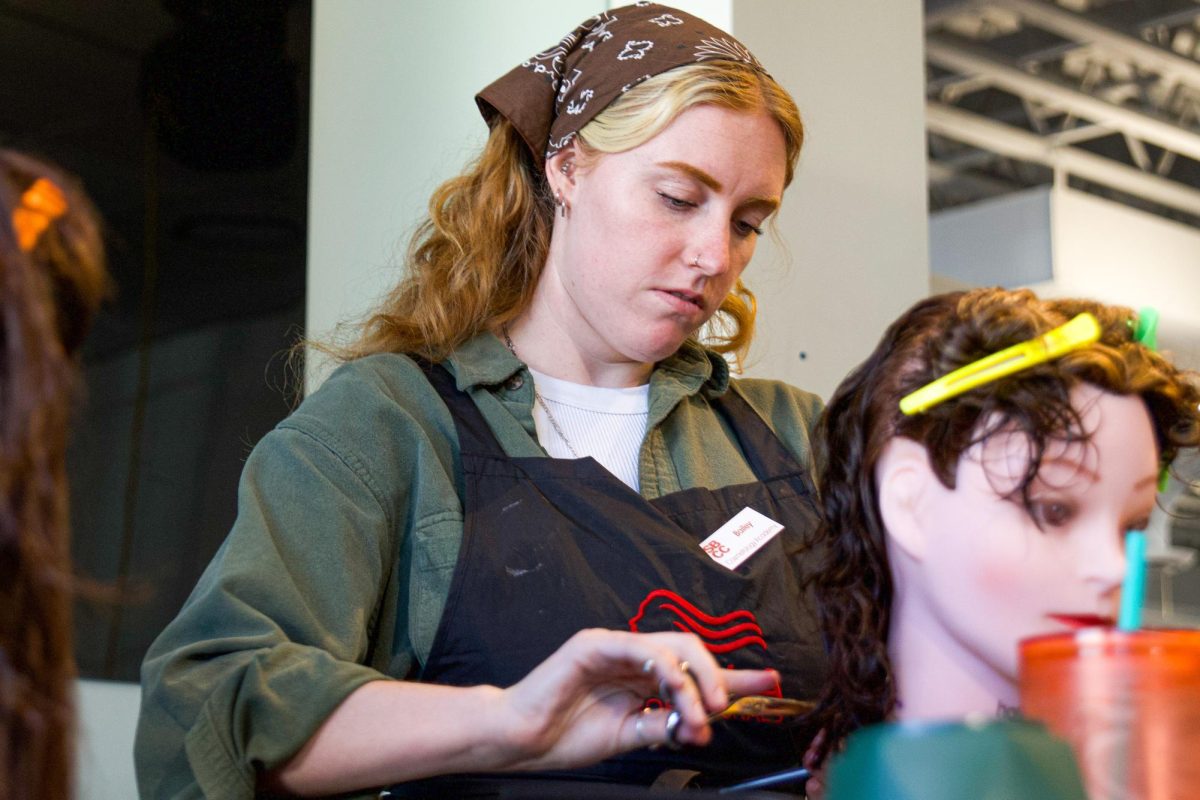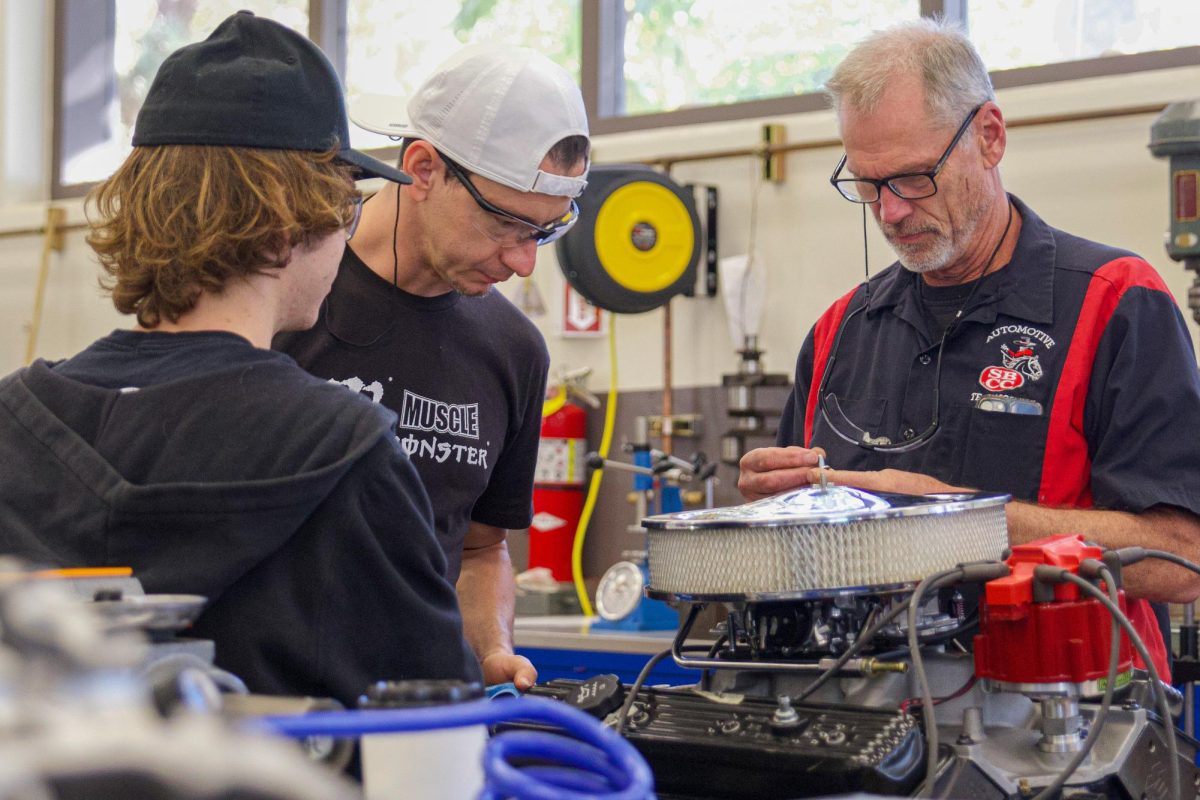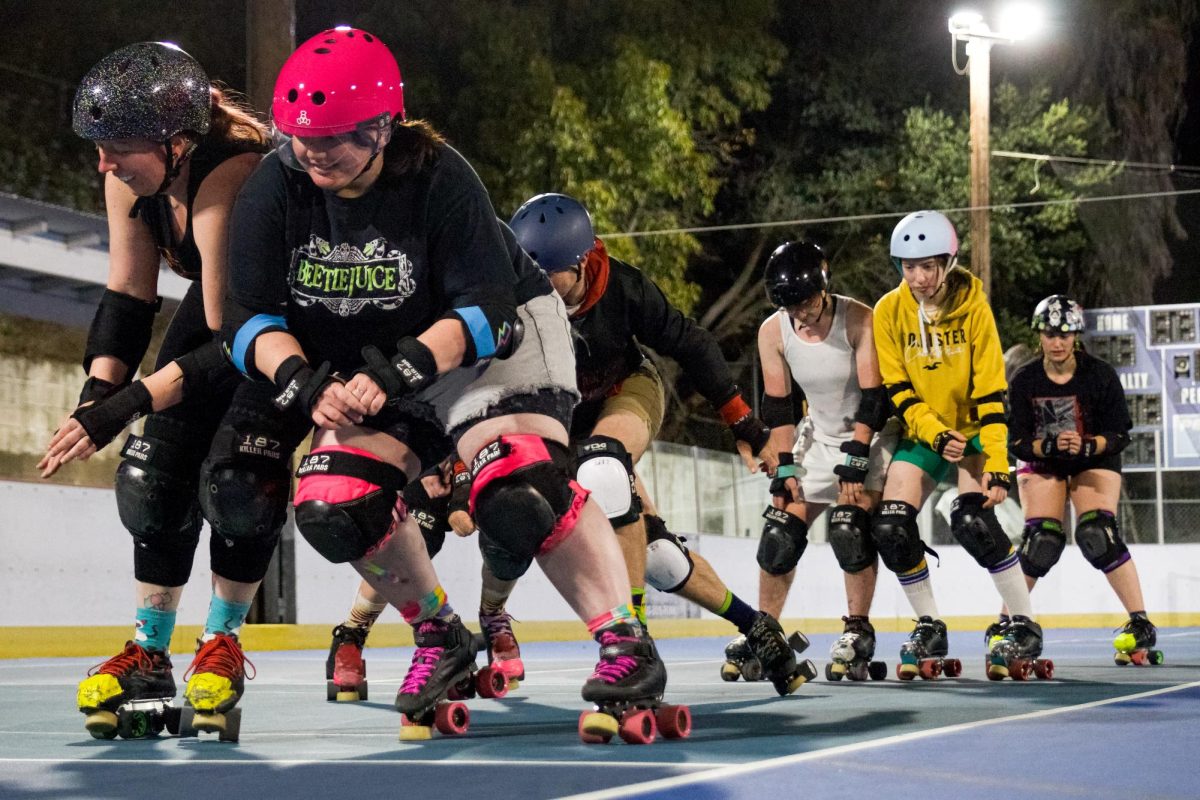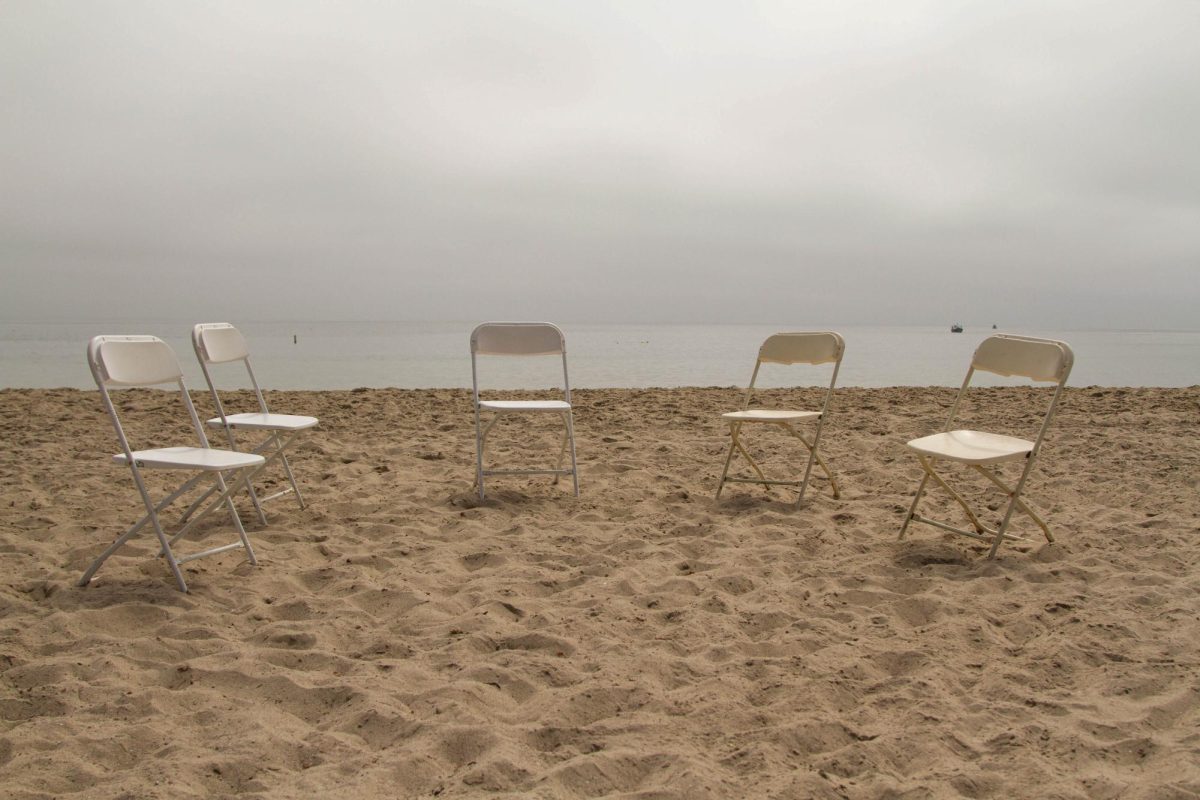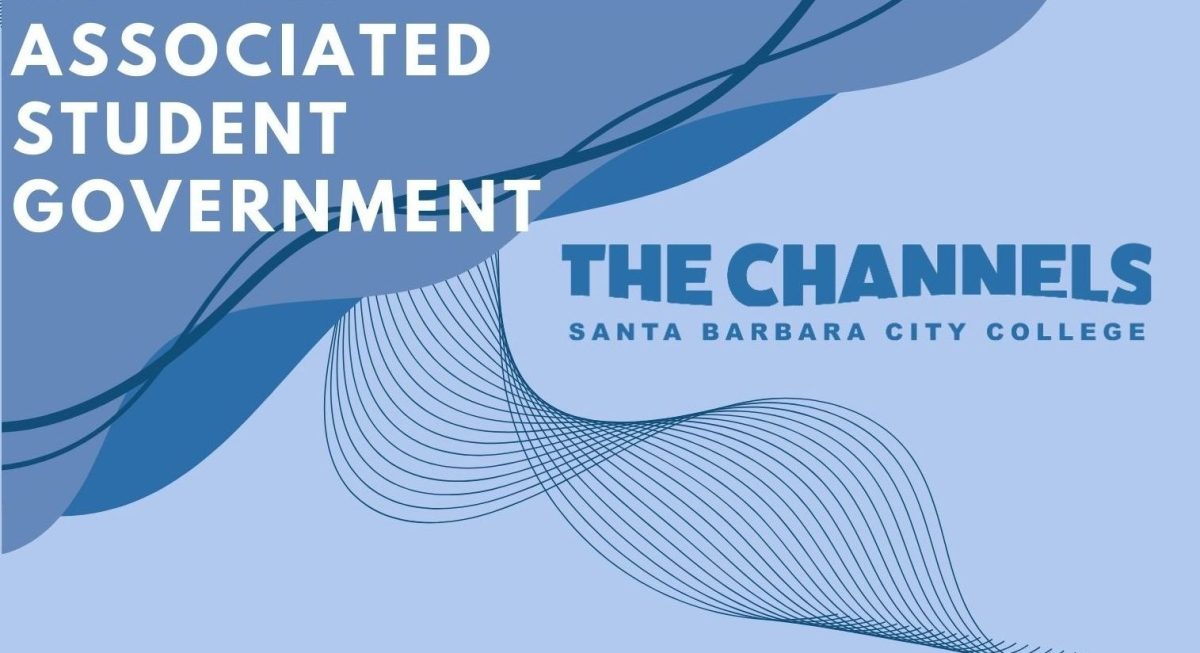A violin soloist plays on Nov. 30 in a classroom a few doors down as students in the AJ 107, concepts of criminal law, are sitting in a slightly dimmed West Campus Classroom Building, room 306, attentively listening to Professor and Department Chair of the School of Justice Studies Anne Redding present her lecture on the projector screen.
Students in this class have been applying everything they have learned throughout the semester to their final project; a research paper on a serial killer.
“They’re [students] going to get a look at the criminal justice system that is entirely through a forward thinking lens,” Redding said, explaining what students should expect to learn in classes from the four separate associate of science degrees Justice Studies offers. “All classes help students understand the world in which they live… the criminal justice system affects every single person in this country everyday.”
These four degrees include Criminology Emphasis, Law Enforcement, Legal Studies Emphasis and Administration of Justice for Transfer.
This semester, groups of students from the AJ 125 class taught by Professor Silvina Minero have worked together in researching and discussing a topic, then presenting the work on large pieces of paper.
Student Britt Lormans’ is from the Netherlands and had a different view on her group’s topic: gambling and prosecution being illegal, as she knows what occurs in Europe.
“It’s really interesting to discuss it, but also clash on it,” Lormans said. “ [We] have different views and different opinions and you can say them because it’s a safe space.”
Minero teaches AJ 101, Introduction to the Administration of Justice and AJ 125, The Introduction to Criminology on campus.
One of the first topics taught in her 101 class is analyzing the biological, psychological and sociological theories that are associated in the violence cases.
“I really want people who have a desire to work in law enforcement to understand where criminal behavior actually stems from and that every person that they will work with has their own unique story,” Minero said. “They need to have understanding and be a little empathetic to that.”
According to Minero, her area of concentration is working and studying childhood trauma and understanding how traumatizing it is for a childhood to be spent living in high crime communities or poverty and the effects that happen later in the child’s life.
The admiration she has on this certain topic has projected on to her students also enjoying studying and learning more about childhood trauma.
“My favorite part I’ve learned is the trauma and how much it affects a child and how they’re growing up,” student from Minero’s class Alondra Lopez Sanchez said. “How it could lead them into entering criminal activity and how they enter into the juvenile system and how they commit offenses as a holder if they dealt with trauma when they were younger.”

In the spring semester, a “Latina’s in Law” workshop was held and set up by Professor Dave Saunders in hopes to encourage more latina students in his class to pursue a career in law enforcement.
At this workshop, Latina police officers from Santa Barbara and one from the Los Angeles Police Department shared their experiences, the reality of the job and their motivation for their position which most said was to help vulnerable victims according to Saunders.
“I think everybody agrees at this point we can do better in the criminal justice system [and] a huge part of that is developing trust,” Saunders said. “There’s a lot of data and there’s a lot of research that suggests and points to the fact that women police officers are particularly good at building trust.”


